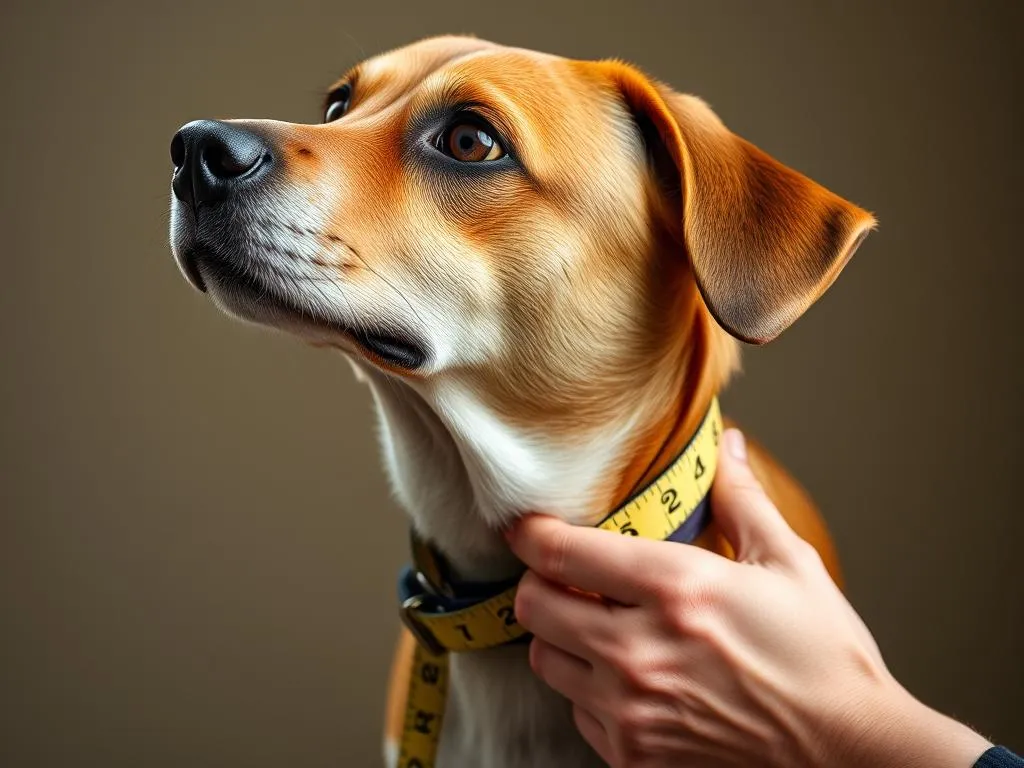
Selecting the right collar for your dog is crucial for both comfort and safety. A properly fitted collar can make a significant difference in your dog’s daily activities, whether it’s going for walks or just lounging around the house. A good collar not only enhances your dog’s comfort but also ensures they remain secure during walks. Here’s a comprehensive guide on how to measure a dog for a collar to help you make the best choice for your furry friend.
Understanding Dog Collars
Types of Dog Collars
When it comes to dog collars, there are several types available, each with its unique features and purposes. Here’s a brief overview of the most common types:
-
Flat Collars: These are the most common type of collar, suitable for everyday use. They come in various styles and materials, making them a popular choice. However, they may not be ideal for all dogs, especially those that pull.
-
Martingale Collars: Designed for dogs that tend to slip out of their collars, martingale collars provide a secure fit without choking. They tighten slightly when the dog pulls but are not meant to be overly restrictive.
-
Harnesses: While not technically collars, harnesses are essential for dogs that need more control, such as those that pull or are in training. They distribute pressure across the dog’s body, reducing strain on the neck.
-
Training Collars: These include choke chains and prong collars, which are used for training purposes. They should be used with caution and preferably under the guidance of a professional trainer.
Each collar type has its pros and cons, so consider your dog’s habits and needs when selecting a collar.
Importance of Proper Fit
Proper fit is essential for your dog’s comfort, safety, and control. An ill-fitting collar can lead to several issues, such as:
-
Choking: A collar that is too tight can restrict airflow and cause choking, especially if the dog pulls on the leash.
-
Slipping Off: Conversely, a collar that is too loose may slip off, posing risks if your dog is outside or during walks.
-
Skin Irritation: Collars that rub against the skin can cause irritation, leading to discomfort and potential skin infections.
Taking the time to measure your dog correctly ensures that you choose a collar that fits well and keeps them safe.
Tools Needed for Measuring a Dog for a Collar
Essential Tools
Before you get started, gather the following tools:
-
Measuring Tape: A flexible measuring tape is ideal for getting accurate measurements around your dog’s neck.
-
Pen and Paper: Keep track of your measurements so you can refer back when choosing a collar.
-
Adjustable Collar or String (optional): If you want to ensure a snug fit, using an adjustable collar can help you visualize the right size.
Preparing the Dog
Measuring your dog can be a straightforward task if you prepare them properly. Here are some tips:
-
Timing: Choose a time when your dog is calm, perhaps after a walk or play session when they are more relaxed.
-
Distraction: Have treats or a favorite toy on hand to keep your dog’s attention while you measure.
-
Comfort: Make sure your dog is comfortable and in a familiar environment to reduce anxiety.
How to Measure a Dog for a Collar
Measuring the Neck Size
To determine the correct collar size, measuring the neck circumference is crucial. Here’s how to do it:
-
Position the Dog: Have your dog stand or sit comfortably. Ensure they are relaxed, as tensing up can affect the measurement.
-
Place the Measuring Tape: Wrap the measuring tape around the thickest part of your dog’s neck, just above the shoulders.
-
Snugness: Ensure the tape is snug but not too tight; you should be able to fit two fingers comfortably between the tape and your dog’s neck.
-
Take the Measurement: Record the measurement in inches or centimeters, rounding up if it falls between sizes.
Accounting for Growth and Weight Changes
If you have a puppy or a dog that is likely to gain or lose weight, consider:
-
Growth Allowance: Puppies grow quickly, so it may be wise to select a collar that allows for some adjustment as they grow.
-
Adjustable Collars: Opt for adjustable collars that can accommodate changes in size over time.
Measuring for Specialty Collars
If you are considering specialty collars, here’s how to measure for specific types:
-
Harnesses: Measure around the dog’s girth, just behind the front legs, in addition to the neck measurement. This ensures the harness fits snugly and comfortably.
-
Training Collars: Follow the same neck measurement process, but be mindful of the collar’s intended use. It’s important to consult with a trainer for recommendations on fitting these types of collars.
Choosing the Right Collar
Selecting Materials and Styles
When choosing a collar, consider the material and style that best suits your dog’s needs:
-
Nylon: Durable and easy to clean, nylon collars are often affordable and come in various colors and designs.
-
Leather: Leather collars are strong and stylish but may require more maintenance to keep them looking good.
-
Reflective Collars: Ideal for nighttime walks, reflective collars improve visibility, adding an extra layer of safety.
-
Custom Designs: If you want something unique, many manufacturers offer customizable options to reflect your dog’s personality.
Sizing Chart Reference
Most manufacturers provide sizing charts to help you choose the right collar. Here’s how to use them:
-
Consult the Chart: Once you have your dog’s neck measurement, refer to the sizing chart provided by the manufacturer.
-
Select the Appropriate Size: Choose a size that closely matches your measurement. If your measurement falls between two sizes, it’s usually best to go with the larger size for comfort.
Tips for Fitting the Collar
How to Properly Fit the Collar
Once you have the collar, follow these steps to ensure a proper fit:
-
Adjust the Collar: If the collar is adjustable, make the necessary adjustments for a snug fit.
-
Two-Finger Rule: Use the two-finger rule to check the fit. You should be able to slip two fingers comfortably between the collar and your dog’s neck.
-
Check for Movement: Make sure the collar doesn’t move too freely; it should remain in place without being overly tight.
Monitoring the Fit Over Time
As your dog ages or undergoes changes, regularly check the collar fit:
-
Routine Checks: Make it a habit to check the fit every few months or after significant lifestyle changes.
-
Signs of Adjustment: If you notice any signs of discomfort, such as rubbing or excessive scratching, it may be time to adjust or replace the collar.
Common Mistakes to Avoid
Miscalculating Measurements
One of the most common mistakes is miscalculating measurements:
-
Double-Check: Always double-check your measurements to ensure accuracy.
-
Avoid Guesswork: Don’t estimate; always use a measuring tape for the best results.
Ignoring the Dog’s Needs
It’s essential to consider your dog’s lifestyle when selecting a collar:
-
Activity Level: For active dogs, a more durable collar may be necessary. For calmer dogs, a softer collar may suffice.
-
Health Considerations: If your dog has specific health issues, such as a sensitive neck, consult with your vet for recommendations on suitable collars.
Conclusion
Measuring your dog for a collar correctly is vital to ensure their comfort and safety. Taking the time to follow these steps will help you find the right fit for your furry friend. Remember, a well-fitted collar enhances your dog’s experience during walks and playtime, allowing them the freedom to enjoy their day safely. Share your experiences or ask any questions in the comments below!









